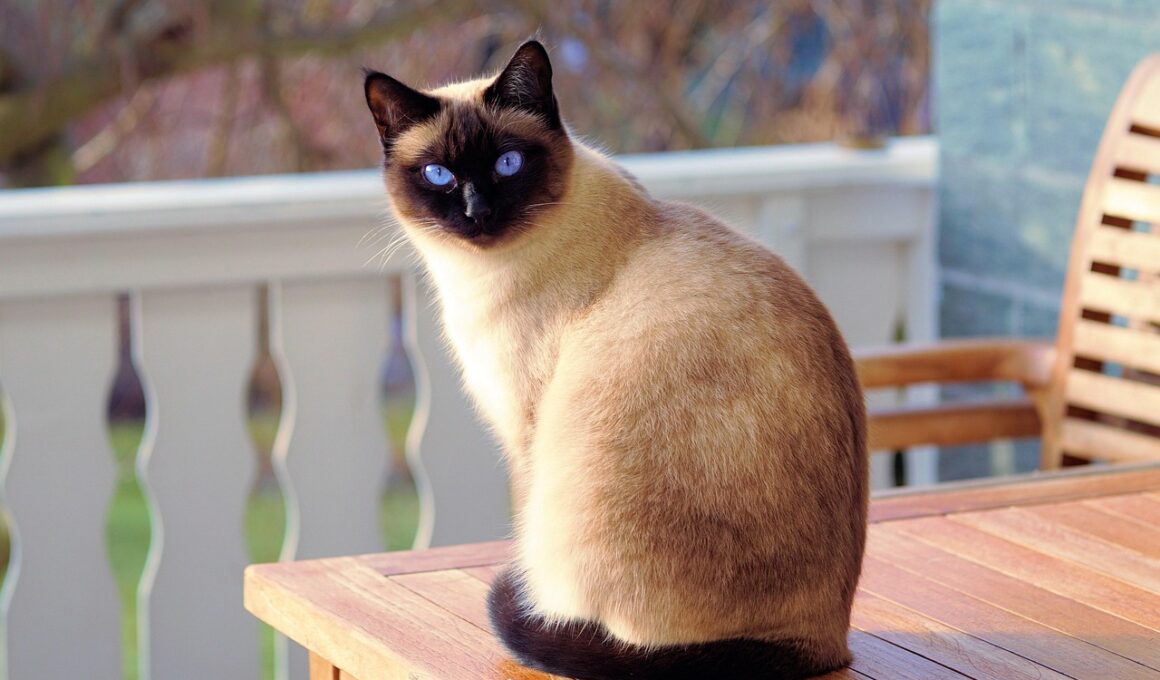Signs Your Cat Is Adapted to a Multi-Pet Household
If you have multiple pets at home, ensuring that your cat has adjusted well to this environment is vital. Observing your feline friend’s behavior can reveal a lot about their comfort level with other animals. A well-socialized cat typically displays calmness in the presence of other pets. For instance, a relaxed posture with an upright tail is a great sign of contentment. Additionally, if your cat engages in playful interactions with other animals, it indicates they are comfortable around them. Look for signs of mutual grooming as well; this behavior reflects strong social bonds. Aggression, on the other hand, can be a sign of discomfort or insecurity. Keep an eye out for sudden hissing, growling, or swatting actions. These may indicate your cat feels threatened. Also, consider how your cat explores common areas of the home. A cat that confidently roams around, sniffing and investigating other pets’ territories is generally well adjusted. Signs such as sharing sleeping spaces or cat trees are excellent indicators of harmony in a multi-pet household, essential for maintaining a peaceful living environment.
Understanding your cat’s socialization is crucial, especially in multi-pet families. A well-adjusted feline usually shows a preference for positive interactions. One of the signs is when your cat engages in vocalizations like purring or chirrups while near other pets. These sounds often denote happiness and affection rather than distress. Further, if your cat knows how to share resources peacefully, such as food bowls or litter boxes, that’s a significant indicator they’ve adapted well. Conversely, fighting over resources may suggest underlying tensions. If you find your cat comfortable using common areas at home without signs of stress, such as hiding or fleeing, your cat is likely well socialized. Frequent grooming sessions with other pets can also signal strong acceptance and friendship. Cats that groom one another exhibit trust, which is important for a harmonious environment. Additionally, consider how they behave during mealtime; if they sit close to each other without any signs of aggression or jealousy, it’s a positive sign. Socialization may not happen overnight, so patience is key as your cat adjusts and bonds with their companions.
Another critical aspect of socialization involves your cat’s ability to adapt to new situations. An adaptable cat often responds well when new pets join the household. Observe their reactions; if they maintain a calm demeanor and engage with newcomers, it signals confidence. An important thing to look for is their willingness to explore new spaces without showing fear. If your cat greets or sniffs other animals rather than hiding or reacting negatively, they have likely received positive socialization experiences. Self-soothing behaviors, such as kneading or grooming themselves, can signify that your cat feels secure regardless of changes in its environment. Listening for gentle sounds like chirping or soft meowing when new pets are introduced is another good sign. When integrated well, cats may even display protective behaviors towards each other. Encouraging play and interaction through toys can help further social bonds within multi-pet households. Allowing supervised interactions during the early stages of socialization can help prevent future conflicts. Furthermore, consider enrichment activities that promote teamwork, enhancing both your cat’s adaptability and ensuring a peaceful coexistence among various pets.
Positive Body Language
Observing your cat’s body language is essential when assessing how well they socialize with other pets. A happy cat will often exhibit relaxed body language, such as a neutral tail position and ears facing forward. When they are relaxed, you might notice your cat stretching or laying down near their companions. Often, gentle nudges or head bunting signifies affection. These behaviors create a strong bond among pets, establishing a friendly environment. If your cat comfortably shares space without any signs of aggression, tension, or stress, it’s a good indicator of social adaptation. Additionally, cats that engage in play-fighting or chasing each other are also indicating comfort levels. These playful interactions can be essential to building friendships among pets. Watch how your cat responds to others approaching their personal space; a tolerant cat may simply observe, while a stressed cat will back away or hiss. By recognizing these unique behaviors, you can better understand how well your cat socializes with their multi-pet household companions. Always reinforce positive interactions, as this encourages healthy relationships among your pets.
Developing social skills in your cats can also foster harmonious living in multi-pet households. Utilizing techniques like positive reinforcement can help shape desired behavior. For instance, when providing treats during friendly interactions, cats associate positive experiences with each other. This creates an atmosphere of trust and camaraderie. Scheduling regular playtime can also encourage bonding sessions, allowing your cats to interact creatively. Providing various toys that can be shared plays a key role in achieving this. Understanding the importance of safe spaces is vital too. Ensure that every pet has a comfortable spot they can retreat to if feeling overwhelmed. Cats often claim their spaces for personal comfort, and having these areas can ease any anxiety. Always supervise initial interactions between newly introduced pets; slowly increasing their exposure can help reduce potential conflicts. Regularly assessing their behavior during these situations can guide any necessary adjustments. When all pets can coexist peacefully and share a common environment without fear, you create a happy and balanced household, leading to the overall well-being of your feline friends.
Regular vet check-ups are also crucial when discussing feline socialization. Health plays a significant role in behavior; cats that feel unwell may become grumpy or irritable. If your cat shows signs of aggression or withdrawal, it’s imperative to check for underlying health issues. Regular vaccinations and health screenings ensure that your pets remain healthy and minimize any associated stress. Keeping your cat’s environment enriched helps maintain mental stimulation, contributing to their overall well-being. Try to provide interactive toys or climbing structures that encourage social play, allowing your cat to express natural behaviors comfortably. Positive interactions with other animals increase not only their social skills but also their overall confidence. Forming friendships among pets decreases loneliness and promotes long-term happiness. When cats sense security and acceptance within their home environment, they generally adapt better to other pets. By understanding each of your cat’s needs, you can create a more harmonious and sociable household. Providing love, support, and open spaces for interaction will keep your multi-pet home dynamic and engaging for everyone.
Final Thoughts
In conclusion, understanding the signs that your cat is well socialized within a multi-pet household requires keen observation and patience. By recognizing key behaviors such as playful interactions, relaxed body language, and healthy resource sharing, you can assess your cat’s adaptability. Additionally, monitoring their responses to new situations plays a critical role in their socialization journey. Positive reinforcement, professional guidance, and quality time spent together are vital components in forming lasting relationships among pets. Establishing cozy spaces, enriching environments, and regular veterinarian visits can help maintain their well-being. Never underestimate the importance of safety during interaction periods; gradual introductions can minimize disputes while bolstering trust. As you foster an atmosphere of acceptance and love, your pets will thrive. A harmonious household provides both emotional and physical well-being for all pets involved. Remember that each cat has its unique personality and social needs. As a pet owner, it is essential to be patient and adapt your approach based on individual personalities. Through love and understanding, you can ensure a peaceful coexistence in your multi-pet family.
Becoming aware of your cats’ interactions allows you to foster a more sociable environment. Remember that every cat has its unique traits, which influences their adaptability in a multi-pet household. Encourage behaviors that reinforce friendship and security. Take note of the various signals your cat communicates and adapt your environment accordingly. Through understanding, dedication, and love, a multi-pet home can flourish with felines living harmoniously. With awareness and guidance, you will enrich their lives and promote positive connections. Ultimately, a healthy bond between your cats contributes to broader peace within the household, showcasing how socialization impacts their happiness and security. Maintaining a focus on the well-being of your pets while celebrating their individual personalities will create a thriving living space. With time, care, and respect for their unique traits, you can achieve a fun and loving multi-pet home together.


